Eleo Gordon and Tony Lacey
The Really Useful Grandparents’ Book
Foreword by Nanette Newman
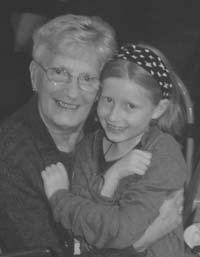
Illustrations: Julia Connolly
VIKING
an imprint of
PENGUIN BOOKS

Illustrations: Julia Connolly
VIKING
an imprint of
PENGUIN BOOKS
Foreword by Nanette Newman
Authors’ Introduction
Outings
Easy Options
Ancient Egypt
Football
Card Games
Nursery Rhymes
Let’s Make Something
Reading is Fun
Family Stories
All Kinds of Poems
Collecting Things
Stamp Collecting
Ancient Stones
Spring
Birds and Bees
Cricket
Easter
Ancient Greece
All About Gorillas
Australia
Captain Cook
Playing Music Together
Virginia Ironside
Ancient Rome

Card Tricks
Magic Tricks
Natural Wonders of the World (Part One)
Classic Stories
The Rattle of Hastings
Cooking
Picnics
Summer
The Seaside
Films
Castles
Ancient China
Canada
Modern Poems
Cards for All Occasions
Athletics
Henry VIII
Camping
Singing Round a Campfire
Rugby
Pirates of the Caribbean
Looking At Paintings
Natural Wonders of the World (Part Two)
Elizabeth I
Shakespeare
Antonio Carluccio
The Great Fire of London
The Deadliest Animals in the World
Potato Printing and Marbling
Sewing
The English Civil War
Rules for Draughts, Chess and Backgammon
Fun and Games
The French Revolution
Slavery
Autumn
London Bridges
All About Birds
Natural Disasters
The Industrial Revolution
Railways
Lucy Lambton
Native Americans
The Wild West
Simple Science
Famous Scientists
Disasters At Sea
Queen Victoria
Fishing
The First World War
Carpentry
Russia
The Second World War
Nelson Mandela
Secret Messages
Famous Explorers
From Carriage to Car
The Olympic Games
Exploring Space
Modern America
Winter
Christmas
Games for Christmas or Other Celebrations
All About Planes
Listening to Music
I Don’t Feel Well
Source List and Acknowledgements
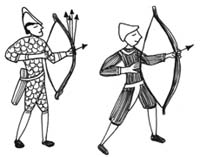
VIKING
Published by the Penguin Group
Penguin Books Ltd, 80 Strand, London WC2R 0RL, England
Penguin Group (USA) Inc., 375 Hudson Street,
New York, New York 10014, USA
Penguin Group (Canada), 90 Eglinton Avenue East,
Suite 700, Toronto, Ontario, Canada M4P 2Y3
(a division of Pearson Penguin Canada Inc.
Penguin Ireland, 25 St Stephen’s Green, Dublin 2, Ireland (a division of Penguin Books Ltd)
Penguin Group (Australia), 250 Camberwell Road, Camberwell, Victoria 3124, Australia (a division of Pearson Australia Group Pry Ltd)
Penguin Books India Pvt Ltd, 11 Community Centre,
Panchsheel Park, New Delhi – 110 017, India
Penguin Group (NZ), 67 Apollo Drive, Rosedale,
North Shore 0632, New Zealand
(a division of Pearson New Zealand Ltd)
Penguin Books (South Africa) (Pty) Ltd,
24 Sturdee Avenue, Rosebank,
Johannesburg 2196, South Africa
Penguin Books Ltd, Registered Offices:
80 Strand, London WC2R 0RL, England
www.penguin.com
First published in 2008
1
Copyright © Eleo Gordon and Tony Lacey, 2008
Nanette Newman’s introduction copyright © Bryan Forbes Ltd, 2008
Illustrations copyright © Julia Connolly, 2008
The moral right of the authors has been asserted
Illustration credits: Library of Congress Catalog for 16-18, 20, 70, 77, 98,105,136, 139,142-3, 170-73, 176,184, 211, 213, 222-3, 233, 235, 245, 247, 258-9, 270–72, 275–6, 288, 293, 297. © Schenectady Museum; Hall of Electrical History Foundation/ CORBIS for 98. Imperial War Museum for 277–8. NASA for 294, 313. Beatrix Potter, The Tale of Mr Tod, copyright © Frederick Warne & Co., 1912, 2002; Eric Hill, Spot Visits His Grandparents, copyright © Eric Hill, 1995: both reproduced by permission of Frederick Warne & Co.
Michael Rosen, ‘On the Train’, from Quick, Let’s Get Out of Here (copyright © Michael Rosen, 1983), reproduced by kind permission of PFD (www.pfd. co.uk) on behalf of Michael Rosen. Roger McGough, ‘The Writer of This Poem’, from Sky in the Pie (copyright © Roger McGough, 1983), reproduced by kind permission of PFD on behalf of Roger McGough. Allan Ahlberg, ‘Scissors’, from Please Mrs Butler (copyright © Allan Ahlberg, 1983); Benjamin Zephaniah, ‘Health Care’, from Funky Chickens (copyright © Benjamin Zephaniah, 1996): both reproduced by permission of Penguin Books Ltd.
Every effort has been made to trace copyright holders and to obtain their permission for the use of copyright material. The publisher apologizes for any errors or omissions and would be grateful to be notified of any corrections that should be incorporated in future editions of this book.
All rights reserved
Without limiting the rights under copyright reserved above, no part of this publication may be reproduced, stored in or introduced into a retrieval system, or transmitted, in any form or by any means (electronic, mechanical, photocopying, recording or otherwise), without the prior written permission of both the copyright owner and the above publisher of this book
978-0-14-188982-5
The first time I heard I was going to become a grandmother it came as quite a shock. Now, having been one five times over, I’m an old hand, but the first time it happens, if you’re anything like me, you’ll run through a gamut of emotions: joy, anxiety, anticipation, anxiety, excitement, anxiety and, lastly, relief. There is this small being, incredibly wonderful, your grandchild. It finally sinks in, and somewhere in your brain you start worrying about what sort of grandparent you will be. You so want to be a good one – of course you do!

Nanette with her daughters Sarah and Emma, and granddaughters Tilly, Lily and India
When I was small I thought all grandparents were fantastically OLD, drinking endless cups of tea and, in my grandmother’s case, knittingtea-cosies or, worse, odd-shaped jumpers I desperately hoped weren’t for me. (They usually were.)
I don’t remember my grandparents playing games with me often, or taking me places, but I do recall my mother telling me to behave and watch my manners when I went to visit them. That said, I loved them and knew they loved me; they were a fixture, a secure and accepted part of the fabric of my growing years.
If, as a child, I had ever been asked to describe my visits to my grandparents, I’d probably have said ‘boring’ but now, in retrospect, I think being bored when you’re young is underrated. I’m convinced a healthy dose of boredom can trigger a child’s imagination. I know it encouraged me to create my own amusements – make up games for myself and at times inhabit a private world of fantasy. Perhaps today we parents and grandparents feel vaguely guilty if we’re not providing non-stop entertainment so are too full-on in supplying ready-made fun.
A young child is naturally curious and, left to his own devices, will discover talents and enthusiasms that need the nudge of boredom to make them flourish. So perhaps my own grandparents, in leaving me to invent my own pleasures, helped to nurture my imagination and (who knows?) triggered my desire to write children’s stories. Although I firmly believe one should encourage and take part in one’s children’s projects, at the same time one should not be reluctant occasionally to say, ‘Get on with something on your own.’
Today’s grandparents are a different breed from mine: they seem younger, more ‘with it’, their role in the family often that of an extended parent. Grandmothers are more likely to be bending over a laptop than a pair of knitting needles and grandfathers probably know who’s topping the charts (even if they still prefer the Beatles). They have also become more useful: they baby-sit and are often good at bedtime stories. Some even genuinely enjoy a trip to the pantomime, and because – obviously – in order to become a grandparent you have to be a parent first, they can say with conviction that the ‘terrible twos’ don’t last for ever (even if it seems like it), that potty training does finally sink in, that teenagers do eventually turn into reasonable human beings, and that it’s a complete waste of breath to keep saying, ‘Eat those nice Brussels sprouts,’ because it will fall on deaf ears. As a grandparent, you quickly learn there are certain things that must never be said – ever: anything that begins with ‘Well, in my day’ or ‘I think you should do it this way’ must never pass your lips.
I once made the mistake of asking Sam (then aged six) how old he thought I was. Without a moment’s hesitation his verdict came back: one hundred and seven. I eventually recovered, but it brought home to me that although we might be among this new breed of younger grandparent, that isn’t necessarily how our grandchildren view us.
What you will discover early on is that being a part – however small – of your grandchildren’s lives is an enormous pleasure and privilege, perhaps something that past generations of grandparents didn’t quite experience to the full.
In fact, there are many things you can learn from your grandchildren. One small example: I am hopeless with mechanical things – my mobile phone seemed to have a life of its own and I couldn’t work out how to stop it taking endless photographs of my feet, until my granddaughter India gave me a master class in its management.
My husband, Bryan, despite his prowess as a film director, found trying to record TV programmes drove him to despair and was forced to ask a small grandson what he was doing wrong. The answer was given in a flash, and gratefully received.
Every grandparent knows there are no two grandchildren alike; what appeals to one will be deemed boring by another. So when I read this book I was delighted that it presented such a wide selection of ideas to encourage your grandchildren to get involved in. I only wish it had been available to me as I stumbled through some of my early grand parenting years. Many of the suggestions are just plain fun, some instructive – e.g. cooking, carpentry, fishing, history – and dozens will engage and fascinate enquiring young minds. There are some terrific ways of connecting with your grandchild while having a good time yourself.
I love being a grandparent. So, armed with this book, I know you will find many new possibilities to explore. Read it, and I think you will agree with me.
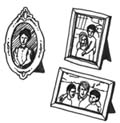
If you’re reading this book, you’ve perhaps already spent hours cutting and sticking bits of paper together; you’ve sat through desperate cartoons in dingy cinemas; you’ve persuaded yourself that it’s fun being in the swimming baths on a Saturday morning. In short, you’ve spent a lot of time entertaining your grandchildren. And possibly the thought has crossed your mind that your grandparents didn’t do half as much with you.
We know the economic reasons for this: there are huge numbers of single-parent families these days, and even traditional two-parent families are stretched. Grandparents are increasingly being enlisted for childcare.
But something else has happened too, some change in the emotional relationship. Much though we may have loved our grandparents, for many of us they were remote, perhaps even forbidding figures. Old people seemed… well, older, then and the houses they lived in stuffy and old fashioned. You don’t have to buy fully into the idea of the groovy granny or granddad to get the feeling that something important has changed.
Whether through economic necessity or some wider cultural shift, grandparents and grandchildren seem closer today than ever before. You read about it frequently in the press: Joan Bakewell writes about taking her granddaughter to see a painting at the National Gallery; Paddy Ashdown says he’s pleased he’s not going to Afghanistan because he can spend more time with his grandchildren; Sheila Hancock likes watching the DVD oîBabe with her grandchildren. But you also see it on the streets all the time: bright-eyed kids hand in hand with bright-eyed grandparents! Let’s be blunt: another reason why grandparents are able to get closer to their grandchildren today is that they’re living longer and staying vigorous longer-they’ve got the time, and the years, to be good grandparents.
What, though, is a ‘good’ grandparent? It’s tempting to answer: ‘Someone who keeps them entertained and sends them home exhausted so they go to bed early.’ That’s an understandable ambition, no doubt enthusiastically endorsed by many parents, but it’s not an easy one to achieve. We’ve all had to confront that cry of the seven-year-old, half challenging, half desperate, ‘I’m bored!’
But most of us probably aim for something else some of the time at least. It would be sad to feel that all you are doing with them is filling in the hours before the parents come back on board. You have the time, but you also have a great opportunity. To put it pompously, to be a grandparent today gives you the scope to be far more than just a childminder – you can be a mentor to your grandchildren too. With parents leading busy, often frantic lives, it’s the grandparents who can spend precious time with the children, listening to them, talking to them, helping them to find what they like and what they are good at.
In this book we’ve suggested many practical things you can do with your grandchildren: cooking, camping, sewing, carpentry, making music and so on. You may start off feeling pretty inexpert at some of these things yourself, but we hope the book will allow you to explore them together. And we’ve provided lots of follow-up suggestions (website addresses, telephone numbers, etc.) if you discover an enthusiasm for the subject between you. Now’s your chance to practise your ‘silver surfer’ skills!
There’s another thread through the book too. It’s our belief that children respond best to narrative: there’s nothing like a great story to capture their attention and liberate their imaginations. So we’ve provided a series of stories as a backbone to the book- from Famous Explorers to Ancient Egypt, from the Deadliest Animals in the World to the Wild West – in the belief that these can be shared too. We hope that you will read and enjoy them together, and no doubt, you will be able to expand on the stories yourself.
To be a grandparent is a wonderful privilege. But there’s no point in pretending that it isn’t also a responsibility, and a very demanding one at that too. With a bit of luck, this book might just help. We hope that you will find The Really Useful Grandparents’ Book exactly that – really useful!
Eleo Gordon and Tony Lacey
There will be times when you all need to get out of the house and go somewhere local, or you may decide to make it a special event and go on an outing. Here are ideas, some round the corner, others more ambitious.
Every town has something you can join or attend from time to time. Bookshops have reading time, and libraries have song and rhythm groups who welcome anyone, however young the child. Playgroups gather in church halls and other places and you can find out about them from libraries, the local council, the children’s health centre and by generally asking around. These playgroups range from those you pay for to others that are almost free. Although you will often have to stay while the child is there, it comes as a welcome relief that she is using up that energy under someone else’s supervision.
One of the best places to take a small child (under five) is one of the many One o’Clock Clubs in the London area, which are funded by the local authorities. They are open between one and four o’clock, and staff are on hand to help and supervise, though the child cannot be dropped off – an adult must stay with her. The children can use the indoor and outdoor toys and take part in learning activities. Our (Eleo’s) local one was full of grandparents chatting and having a cup of coffee while the little ones pottered around.
You are probably fairly close to a playground. The dismal ones of the past have gone. Most now have wood chippings or the new rubberized surface making them much safer and, on the whole, the equipment is colourful and modern. Small children have surprisingly simple tastes and positively love regular trips back to that same old roundabout. Somewhat older, they can go to adventure playgrounds where they can really stretch themselves, have a thrill and even take risks under supervision. If you have a garden with a bit of room in it, a climbing frame with ladders, slides and all sorts of places to hang upside-down and contemplate the world is a wonderful investment.
Swimming is a favourite activity for all small children, developing your grandchild’s pleasure, confidence and safety in the water. Most public pools have a baby-pool heated to around 38°C so your grandchild can start swimming, with you, from as early as four months or once their first immunizations are completed. Half an hour is long enough for babies and it’s a bonus that the baby-pool is lovely and warm for both of you. Allow plenty of time for changing and remember to take baby-swim nappies and buoyancy aids if needed.
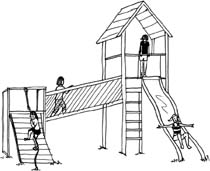
Public pools and private gyms often have swimming classes for carers and babies where they learn to ‘swim’ above and below water and play games such as Ring-a-ringo’ roses, ducking under water at the ‘Atishoo’. These classes can be an enjoyable social experience for the child as well as helping him to become water-confident. Private and public baby-swimming classes are listed on the internet.
Most public pools also have graded classes after school where the older child can learn proper swimming strokes, diving and all-round water competence – and you can sit there and watch. But it’s also great just to go for fun swims together, maybe taking a ball to throw, letting him swim under your legs and generally splashing around together.
Scavenger hunts are popular in our family, and even reluctant walkers are lured outside if they know they will be on the lookout for something. You make up a list for the children of objects they have to find on a walk (help those who can’t read). If the list is likely to dissolve into pulp write it on a postcard and slip that into a sandwich bag as protection. Before you leave stuff your pockets or bag with apples, drinks and tissues. At the end of the scavenger hunt they will be delighted with what they have found, will have been outside for an hour or so and maybe the richer from a small reward.
If it’s not scavenging, it could be counting the cracks in the pavement, finding the most cats or dogs, prettiest stones, leaves, feathers, spotting the most tin cans (maybe pick them up and do your bit for the environment).
In the build-up to Christmas why not play our Christmas Tree Game? On a town walk (or bus or car journey) see who can spot the most Christmas trees with twinkling lights in shops or homes. Ropes of lights on their own don’t count. Beware, it can get very exciting, and if you’re driving when the children start playing don’t join in! In a bus or car the time flies by.
Play hide and seek on a walk, or I Spy, or Grandmother’s/Grandfather’s Footsteps.
If you can face it, go to a nearby car-boot sale – children love wandering among cars and trestle tables and, of course, their pocket money will go further there than in the shops. Be careful about your bargains, though. Don’t fall, as I did one day, when I took some children round the local car-boot sale, and found later on that the special bargain was the same price at Ikea. If you go to the shops and pass a charity shop why not see if they have any odd cheap hats, scarves, tops that would make good fancy dress.
A lovely outing, if you live near a town that has one, is to take the children to a pottery café. There they choose from a huge range of pottery, from a tile to a mug, and then decorate it. The child can do what she wants, from drawing her own designs to having her hands painted and pressed onto the pottery. Grandparents can watch quietly, holding their own mugs. Another place is Art Fun where you can make the pottery itself.
Bus trips are usually popular – in a big town consider taking the town tour on an open-top or tourist bus where you can hop on and off. There will be endless things to point out and the children will feel on top of the world…
An exciting outing is a day by the sea. If the weather looks reliable jump on a train and spend a day on the beach. If you are at the seaside, outings can be focused around shells, seaweed, funny bits of driftwood to make into objects and so on–see The Seaside on page 126.
If you live within reach of a river that does boat trips why not take a boat for a few stops, explore at the other end, then catch another boat or a bus back? A great day out is a trip down the Thames to Greenwich. Go to Tower Hill and take the Docklands Light Railway, get off at Island Gardens, walk under the Thames via the Greenwich Foot Tunnel and enjoy yourselves in Greenwich. On your return take the ferry all the way back. Alternatively take advantage of the river walk along the South Bank. There is the wonderful Thames waterline to gaze at, the Millennium Bridge to walk over and endless other things to amuse and intrigue young minds.

For children who don’t see enough of the countryside there are many open farms and city farms. There, children can clamber on farm machinery, watch the milking, wander round the farm and leave behind their city lives. See www.farmsunday.org and www.nfuonline.com for further details.
Occasionally give the children a treat, and visit a castle, hill fort, zoo or wildlife centre. These, and others, often offer specific programmes for children with special tours, quizzes and fact sheets. Occasionally the child can handle the objects.
With this in mind a wonderful adventure awaits children at Kew Gardens. From March to October they host a Midnight Ramblers sleepover. The children stay overnight, search for wildlife, including badgers, bats and owls, toast marshmallows round a fire, and experience many other adventures. One adult needs to accompany up to four or five children. For more details contact Royal Botanic Gardens, Kew: www.kew.org/visitor; Tel: 020 8332 5000.
The Royal Botanic Garden at Edinburgh also host excellent children’s activities at weekends and holidays. See www.rbge.org.uk/whats-on/family-events; Tel: 0131 552 7177.
Almost all places of interest put on special events during the school holidays. For instance, at Easter many houses and stately homes open to the public arrange Easter egg hunts; museums have special craft days and so on.

Other child-friendly museums include the Dinosaur Museum, Dorchester; Sensation, Dundee (science isn’t boring here: everything is interactive); Pitt Rivers Museum and the Museum of Natural History, Oxford (stuffed with items, and hosting frequent special events); Glasgow Science Centre (with many workshops); the Rig Pit National Goal Museum, Rlaenafon, Torfaen (a prize -winning museum with a mine you can go down).
Show Me (www.show.me.uk) is a really useful site: it is divided up by region and gives information on museums and collections. It is specially designed to appeal to children and gives opening hours and details of collections in galleries and museums throughout the UK.
If you live within reach of Sheffield do think of visiting the completely refurbished Weston Park Museum, www.sheffLeldgallenes.org.uk; Tel: 0114 3783600. Lottery Fund money has transformed it. It has a hi-tech adventure playground that is hugely successful, an impressive Arctic World section with Snowy the polar bear and much else.
The Eureka Museum for Children, Discovery Road, Halifax, West Yorkshire, is well worth a visit – allow lots of time. See www.eureka.org.uk; Tel: 01433 330069. A friend took four children from London for a day trip to visit and they had the time of their lives. There are literally hundreds of ‘must touch’ exhibits and many events and activities.
A riveting and somewhat gruesome place to visit is London’s Old Operating Theatre Museum, 9a St Thomas Street, London, SEI, www.thegarret.org.uk; Tel 030 7188 3679, the former teaching theatre of St Thomas’s Hospital. Here, children can see terrifying surgical instruments and, among other things, there are hands-on displays that will keep most happy.
The Transport Museum in London has family fun days and outings to visit steam engines. See their website for all special events including visits to the Depot and steam engine trips: www.lt.museum.co.uk; Tel: 030 7379 6344.
The British Museum (www.bntishmuseum.org), the Natural History Museum (www.nhm.ac.uk), the Science Museum (www.sciencemuseum.org.uk), the Horniman (www.horniman.ac.uk), the Victoria and Albert Museum (www.vam.ac.uk) and its offshoot the Museum of Childhood in Bethnal Green are all child-friendly and offer workshops and children’s programmes. The Tower of London, London Zoo (www.zsl.org/zsl-london-zoo) and the London Aquarium (www.londonaquanum.co.uk) are endlessly fascinating. Within London, the website www.londonkidz.co.uk is excellent and offers a huge variety of things to do with children.
Certain museums, including the British Museum and Science Museum, London; Eureka, Halifax; Royal Armouries, Leeds; the Deep, Hull; and B.MS Belfast, London, offer sleepovers. The child plus bedroll joins a group at the museum, has a special child-friendly tour and then ‘sleeps’ alongside the mummies or whatever. They are hugely popular so book up early.
If you live in the north or are visiting on holiday a simply wonderful day can be spent at the Reamish Open Air Museum, near Newcastle (www.beamish.org.uk; Tel: 0191370 4000). Here children can see and experience life as it was in the 1800s and 1900s. It tells the story of the effect of the Industrial Revolution, and its buildings, shops, houses, mines and industrial machinery bring it all to life. Allow a day to visit if possible. Throughout the summer there are endless special events.
After school or over a weekend, when the children need to unwind or you wouldn’t mind some peace and quiet, these ideas will give an immense amount of fun to children and provide a welcome break for you. Set them off with the ideas and let them get on with it, or just join in when you want.
These are very popular with younger children and can range from a dolls’ tea party to a secret language such as Eggy Peggy. The secret language of Eggy Peggy came from one of Nancy Mitford’s books and was spoken by my (Eleo’s) husband and daughter. For some reason I could never master it. When you both get practised you will be surprised how fluent you are and can have secret words on buses and in shopping queues, and time will fly by.
This is how it works: add ‘egg’ before each vowel. For example ‘Mary had a little lamb’ becomes ‘Meggary heggad egga leggittlegge leggamb’.
Another idea is to ask a child what they imagine they would like to be when they grow up. If it isn’t fireman or ballerina it may be prime minister, doctor, teacher, the Queen, etc. Then ask them to imagine what you were like when you were a baby or their age. You may be surprised.

Charlotte and Lucy after school
I loved creating our fancy dress box – it’s huge by now and in it, among many other things, are a couple of ancient frilled silk shirts from my mother’s childhood, old school ties, daughter’s fairy dress and bridesmaid outfit and misshapen fur hats, a bowler and a couple of fezzes. It takes a bit of time but it’s pretty easy to build up something similar of your own. Family, friends and the local charity shop will usually be able to provide a few cast offs, and bring back odds and ends from foreign holidays. Scour your drawers for those ethnic beads you never wore, that old skirt with a net petticoat, those tie-under-the-chin scarves that have had their day, and so on, and gather everything up in a large cardboard box or spare drawer. The children can role play to their heart’s content – or even put on a fashion show.
Fancy dress can move on into little plays, which can involve you, teddies, dolls or other children. You only need to ad lib but if the child is keen small parts can be written up.
To take it even further, if you have time and a handful of children, a real play or show can be rehearsed and put onto a special audience, along with tickets, programmes, rows of chairs and master of ceremonies to make it all more real.
While we are talking about shows maybe do a version of a real television show. A while back three sisters I know, aged ten to five, put on their version of Blind Date for us. They took it in turns to be Cilia, the lucky girl and her wannabe suitors. They each held a ‘microphone’ and their mannerisms were perfect. We all nearly died of laughter. These days X Factor, I’d Do Anything or Dr Who might make good subjects.
A den is a great addition to the world of pretend. This can be inside or outside, a short-term affair for an afternoon that relies on a couple of upside-down chairs and a rug or two, or amore substantial structure built in the garden. In a den they can leave behind all worldly concerns, forget about homework, times-tables and other necessities of life.
Why not hold an art exhibition, possibly for a children’s charity? You will obviously need to plan far ahead so enough drawing, painting and modelling can be displayed. The children could also draw a picture of you or other members of the family – you will be surprised by the results. The children can spread the word around and family and friends can attend. Again, leaflets, tickets, pricing and displaying must be done ahead so everything runs smoothly on the great day. One grandchild can be in charge of drinks and nibbles, while another helps with the money – children can be wonderfully mercenary on these occasions and charm extra cash out of the grown-ups.

Nanette by her granddaughter Lily
For older children this is great fun and will keep them occupied on outings. Arm them with a notebook and pencil and either brief them or let them decide who to be. They can interview each other, you, family and friends, and even friendly shopkeepers provided they have time to answer. It will help them enormously when they get round to their GGSE geography interviews in the local town or wherever.
This was one of my favourites as a small child. I watched with huge envy as my aunt created one for the vicar’s son. The grown-ups collected little tins and cardboard boxes, small change (farthings at the time), scales or measuring cones. Food consisted of bowls of raisins, biscuits, spice packets, rice, nuts, fruit, etc., all carefully placed on the ‘shop shelves and counter’. It’s so easy to create from a couple of old boxes and gives enormous pleasure. The eager shopper can make out little lists and the shopkeeper can make out the receipts as the cash till pings. It’s great for basic counting and money skills.
Perfect if you want a lie down. Let the children play- act a trip to the dentist or beauty parlour with you on the couch. For the dentist you will have to put up with a bit of prodding and probing so you may go for a beauty routine instead. A beauty parlour session needs you in a good mood, happy with the childish hand manipulating a warm flannel over your face, applying globs of Pond’s Gold Cream, bits of cucumber to the eyes, a leg and arm massage, some bright nail-varnish on toes and fingers, their version of an Indian head massage (which might be surprisingly relaxing) and finally a hair- do that might just hurt a bit as your hair is tugged about. Children will adore it even if you don’t come out looking quite as lovely as before. But you will have had a lie down and you can tell the children to take their time.
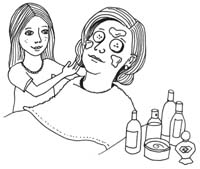
What about Mixtures? Two grandchildren I know say this is the very best end-of-day game of all, and my grown-up daughter had a happy faraway look on her face when I said I was putting it into this book. It needs aprons, bowls, spoons, bags of flour, chocolate powder, vegetable oil, dry pasta, any other harmless food which you won’t miss, a bit of food colouring and an indulgent blind eye as they play contentedly on the kitchen floor mixing it up together with water. The result is always repulsive but they will have had a lovely time.
Young children simply love ancient Egypt – they are fascinated by pyramids, mummies, strange animal gods and Tutankhamun’s treasure. If you ask any small boy what his favourite subjects are he is likely to say Egyptians, Romans, sharks and dinosaurs. So here, for young children everywhere, is a short history of the Egyptians.
Ancient Egyptian civilization began in the fertile valley of the River Nile and lasted for an incredible 3,000 years. It is strange to think that we are closer in time to the last ancient Egyptians than they were to their own first kings. The desert sand and the hot, dry climate have preserved much of that civilization, not just their great temples, statues and the tombs of their kings, but other things too, such as books and even private letters.
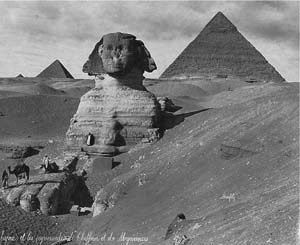
The Sphinx with the Great Pyramids behind
The most famous buildings in Egypt are the three Great Pyramids at Giza. These were tombs built by the pharaons (kings) and they are 4,500 years old. The stones used to build them were floated down the Nile on wooden rafts and dragged to the site by thousands of labourers. It took these labourers and skilled workers thirty years to build the pyramids, using levers, rollers and pulleys to move the stones around.
The pharaons were buried in secret chambers deep within the pyramids approached by narrow tunnels, which were then sealed up. The builders created empty chambers, false doors, dead-ends and deep pits to try and fool any robbers who tried to find the tombs. The oldest and largest pyramid of all is the Great Pyramid, which was built for King Khufu (or Cheops) and completed around 3560 BG. The next largest pyramid was built for King Khafre and the smallest for King Menkhare. Later on pharaons were buried in tomb chambers cut into the sides of mountains in other parts of the Nile valley, particularly in the Valley of the Kings on the other side of the river from the capital, Thebes (now called Luxor). As time went by most of these burial places were covered by desert sand and hidden.
Close by the pyramids is a massive rock carving called the Sphinx. People think that the Sphinx was made to guard King Khafre’s pyramid. It has the body of a lion and the face of a man (probably Khafre) and is carved out of a single piece of rock. The Sphinx originally had a beard, but this was knocked off at some point (as was its nose) and buried in the sand. The beard was eventually found and is now in the British Museum.
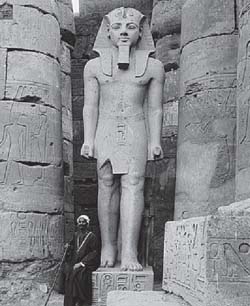
The temple of Ramesses II at Luxor
The pharaoh was the most powerful person in Egypt. The ancient Egyptians believed that when a pharaoh died he became a god. One famous pharaoh was Ramesses II, also called Ramesses the Great. He had over one hundred children and he built more monuments and statues of himself than any other pharaoh so that he would never be forgotten.
Hatshepsut was another interesting pharaoh. Though she was a woman she ruled as a pharaoh in her own right and even went into battle. She ruled Egypt for twenty years and images show her wearing a beard to show she was a pharaoh.
The pharaoh we perhaps all know best is the boy-king Tutankhamun. He was only nine years old when he came to the throne and reigned for just a few years before dying mysteriously when he was still only eighteen or nineteen. Was he murdered or not? No one knows. He is famous because of the astonishing treasure found in his tomb.
Over the centuries most pharaohs’ tombs were robbed and when they were found again thousands of years later, little had survived apart from beautiful wall paintings. However, in 1922 the archaeologist Howard Garter and his patron Lord Carnarvon discovered the tomb of Tutankhamun, which still had its fabulous treasure of gold and jewels. The tomb was packed with furniture and other objects the king would need in the Afterlife (life after death). The mummy of the boy-king lay undisturbed within three coffins and wore a fabulous golden mask.
When Lord Carnarvon died just seven weeks after the opening of the tomb rumours began about a spooky curse that brought death to those who had entered the tomb. Speculation was fuelled by Sir Arthur Gonan Doyle, writer of the Sherlock Holmes books, who suggested that Lord Carnarvon’s death might have been the result of a Pharaoh’s curse.
Here are some of the things that happened – see what you think.
∗ Lord Carnarvon actually died from an infected mosquito bite.
∗ The lights of Cairo went out when Lord Carnarvon died.
∗ Back in England, Lord Carnarvon’s dog, Susie, howled and died at exactly the same time as her master.
∗ Lord Carnarvon’s brother died suddenly, five months later.
∗ Howard Carter’s pet canary died the day the tomb was opened – it was eaten by a cobra.
∗ Six of the 26 people involved in the opening of the tomb died within ten years.
∗ A policeman guarding Tutankhamun’s treasures on an American tour had a stroke soon after.
So, was it a curse or not?
The ancient Egyptians believed that when someone died they went on to live another life – the Afterlife. Important people, such as pharaohs, were specially prepared for this journey to the Afterlife.
First the body was taken to a tent and washed with sweet-smelling palm wine and water from the Nile. A cut was made in the left side of the body and all the internal organs such as the liver, lungs, stomach and intestines were removed. The heart was left inside, as it was necessary for the body to have a heart in the Afterlife.
The organs were washed and then packed in a salt mixture called natron to dry them out. They were then put into special jars, called canopic jars, which were buried with the mummy.
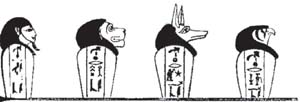
Ganopic jars
Now for the nasty bit. A long thin hook was pushed up the nose and wiggled around to mash up the brain, which was then pulled out through the nose!
The whole body was covered in natron to dry it out. After forty days the body was washed again with Nile water and covered in oil to keep the skin soft. The empty body was pa eked with sawdust, leaves and linen bandages to fill it up again so that it looked lifelike. Later the method changed and the organs were put back into the body, but they still put empty canopic jars by the mummy.
The whole body was then wrapped round with bandages – now it was a mummy. This embalming process was so well done that even thousands of years later, when mummies have been unwrapped, the bodies, though dark and shrivelled, are still in amazingly good condition.
Finally the mummy was encased in one or more human-shaped coffins and placed in a large stone coffin called a sarcophagus. Egyptians were afraid the body would not be able to eat or drink on its journey to the Afterlife so cups, forks and sacred drinks, along with many other small objects and mummified animals, were placed inside the coffin to accompany the body on its long voyage.

Anubis, god of mummification, tends to a mummy
The ancient Egyptians believed in hundreds of gods that looked after the people of Egypt. Some ensured that the sun shone, the rain fell and the crops grew, others protected the people from bad things. The gods lived in temples, which were built specially for them and where people came to worship them.
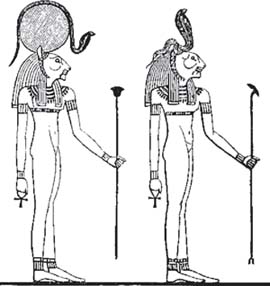
Bastet
Many of the Egyptian gods and goddesses were represented by animals. A very important god was Re, or Ra, the sun god. He is represented in many ways – sometimes as a hawk and also as a dung beetle, which pushed a disc representing the sun across the sky. Others were Apis, a bull, and Sohek, a crocodile. The Egyptians loved Sohek and built special pools by their temples so they could keep crocodiles, and they even covered the crocodiles with jewels. The Egyptians also worshipped cats, as they believed they had magical powers. Bastetwas the cat god–sometimes she was a lioness and sometimes an ordinary cat. She was the daughter of the sun god Re and was responsible for the sun ripening the crops. There were many images of her in the temples and hundreds of cat mummies of her have been found in little cat-shaped coffins. When they mummified a cat they did it very carefully – they used separate bandages to wrap its legs and tail and whiskers! Anuhis was a jackal who looked after the dead and was the god of embalming. Thoth was the moon god; he had the head of an ibis (a sacred bird with a long, curved beak) but occasionally Thoth took the form of a big white monkey. He helped and protected writing, mathematics and medicine.
The River Nile flows from East Africa to the Mediterranean, and in Egypt on both banks there is a narrow strip of fertile land. Every year the Egyptians waited for the Inundation which was when the Nile flooded and the waters covered the surrounding fields. The Egyptians had special stones with measurements on them to record the height of the water –they were called Nilometers. When the waters receded they left behind a rich river soil on the cultivated fields. The soil was so rich that harvests could take place throughout the year and the ancient Egyptians could grow a huge variety of crops, including cucumbers, beans, melons, dates, apples, plums, peaches, garlic and leeks. They had cattle and fished but at first they didn’t eat chicken or eggs. In fact one pharaoh kept some chickens in his zoo. Thousands of years later in 1970 the Aswan Dam was finally built across the Nile which meant that the annual flooding of the land could be controlled and farmers knew exactly when the waters would flood their fields.
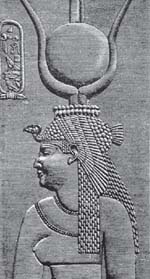
Hieroglyph of an owl, which means the letter M
The Egyptians didn’t use letters as we know them. They had a form of picture writing called hieroglyphics and other simplified scripts. For centuries nobody understood the ancient Egyptian hieroglyphs. It was the discovery of the Rosetta Stone in 1799 that unlocked their secret.
The stone was discovered by chance by a French soldier who was in Egypt with Napoleon’s army. He was in charge of some fortifications at Rosetta when he spotted a strange black stone that had been built into a wall. He reported this to an archaeologist who was with the army, and the rest is history. When the French army surrendered to Britain the stone was handed over. It is now in the British Museum.
The stone had three different types of writing on it – ancient Greek at the bottom, a simple script called demotic in the middle and hieroglyphics at the top. They all said the same thing so because scholars could read both the Greek and the demotic, they knew what the text was saying and could decipher the hieroglyphs. Writing was a very important part of tomb decoration. The writing on the walls in a pharaoh’s tomb helped him to get to the Afterlife.

Queen Cleopatra
The ancient Egyptian civilization lasted remarkably unchanged through many centuries. Even when Egypt was invaded by the Persians, and later by Alexander the Great, the Egyptians’ way of life changed little. The Greeks left behind a new dynasty of Greek pharaohs called the Ptolemies. The most famous Ptolemy was also the last – Queen Cleopatra. After her death Egypt became a Roman province, its civilization declined, and eventually its great buildings and monuments were all covered by sand. The land was finally conquered by the Arabs in AD 640.
You can take young children to see mummies, both human and animal, statues and the Rosetta Stone at the British Museum. There are also collections in many towns including Oxford, Cambridge, Glasgow, Manchester, Newcastle, Birmingham and Liverpool, and in Canada at the Royal Ontario Museum, Toronto. Another good collection is at Highclere, home of Lord Carnarvon: Highclere Castle, Highclere, Berkshire (www.highclerecastle.co.uk; Tel: 01635 253204).
See these websites: www.ancientegypt.co.uk; www.thebritishmuseum.ac.uk/childrenscompass (British Museum); www.mfa.org/Egypt (Museum of Fine Art, Boston, USA).
Have a look at DK’s Eyewitness Ancient Egypt.
It’s hard to avoid football. Certainly that’s what my grandchildren feel, with a grandfather and fathers who are passionate about it. If the boot’s on the other foot, and it’s you who feels a little less enthusiastic, it’s probably best to go with the flow: at the very least it’s a shared subject to talk about. Of course, if you can bring yourself to take them to a match (and can afford it – an important consideration these days), so much the better – most children seem to find the spectacle completely entrancing. But choose carefully: the team you pick is likely to stay with them for life !
When Italy beat France in the 2006 World Gup final, three billion people round the world watched the game on television. That’s about half of all the people alive today! Football is truly the most popular sport in the world. But where did it all begin?
Nobody really knows who invented the game. Perhaps it was the people who lived in ancient Mexico. The remains of pitches have been found all over the area, and local myths refer to a game that sounds like football. Also the Mexicans knew how to make proper balls: the rubber plant was then found only in tropical America, and the Mexicans had discovered how to mix its latex juices with the roots of other plants to make a solid rubber ball.
But the real game as we know it today began in Victorian Britain, first in the public schools, then in the industrial cities that were growing up in northern England and Scotland. The spread of the railways soon meant that teams from different parts of the country could play each other. Men would finish work at lunchtime on Saturday and go off to watch a football match.
Some of the early rules and practices seem strange to us. For example, teams changed ends after every goal was scored. And teams lined up with a goalkeeper, two defenders, one midfielder and seven forwards! Players didn’t pass to each other very much either. In an 1877 England–Scotland game, the Hon. Alfred Lyttleton said to one of his teammates who had complained about not being passed the ball: ‘I am playing purely for my own pleasure, sir’! Can you imagine Steven Gerrard saying that to joe Cole?
But by the time the Football League was established in 1888 most of the rules we know today had been fixed, including the crucial off-side rule which stopped players just lurking near the goals. As a result football is a low-scoring game –when a goal is scored, it’s a real event.
There were 12 teams in the original Football League, all from the cities of the north and the Midlands; the Scottish League was founded five years later. Football was then taken out to the rest of the world by British soldiers, teachers and merchants, with the result that today it’s the maj or sport everywhere, apart from North America, India and Australasia.
Football has always been popular with girls as well as boys. In 1920, 53,000 spectators saw Dick Kerr’s Ladies play St Helen’s Ladies at Everton’s ground, the kind of attendance you would find at a Premier League game today, but the following year women’s clubs were banned from proper stadiums by the FA. As a result women were excluded from the game for a long time. Now they are playing it again in great numbers – especially in America. In 1999 Brandi Ghastain scored the decisive goal in the penalty shoot- out against China to win the women’s World Gup for the USA. In her excitement she immediately pulled off her shirt. Her photograph was in every newspaper round the world the next day, and suddenly women’s football had become very famous indeed!
Because many clubs are now at least a hundred years old, and have deep roots in the community, studying the history of a team is away of exploring local social history. Here are just six short examples showing that even a club’s name or nickname can reveal some interesting facts.
Northampton Town Northampton was traditionally a centre of shoemaking and other leather industries, most of which have now disappeared from the city, but the football team, which was founded in 1897, is still known as the Gobblers.
Luton Town Just down the Mi motorway from Northampton, Luton Town are known as the Hatters for a similar reason: that Luton was once a centre of hat-making.
West Ham United The origins of the club are in the Thames Ironworks team, founded for workersfromtheTham.es shipyard of that name. In 1900, they changed their name to West Ham, but as well as the more familiar name Hammers, they are still known today to their supporters as the Irons: ‘Gome on, you Irons!’
Arsenal Now a famous north London club, Arsenal started in south London as Woolwich Arsenal, with players from the local Royal Arsenal factory, which made guns and explosives for the British Army. This explains why the team is nicknamed the Gunners. In 1913 the club moved across the river.
Chelsea The club’s most famous nickname is the Blues, after the colour of their kit. But they are also known as the Pensioners – the name comes from the war veterans who live in the nearby Royal Hospital.
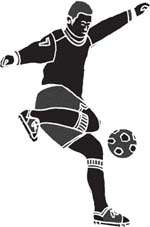
Sheffield United Sheffield was a great steel-making city, and United are known after one of its specialities – making cutlery. They are known as the Blades.